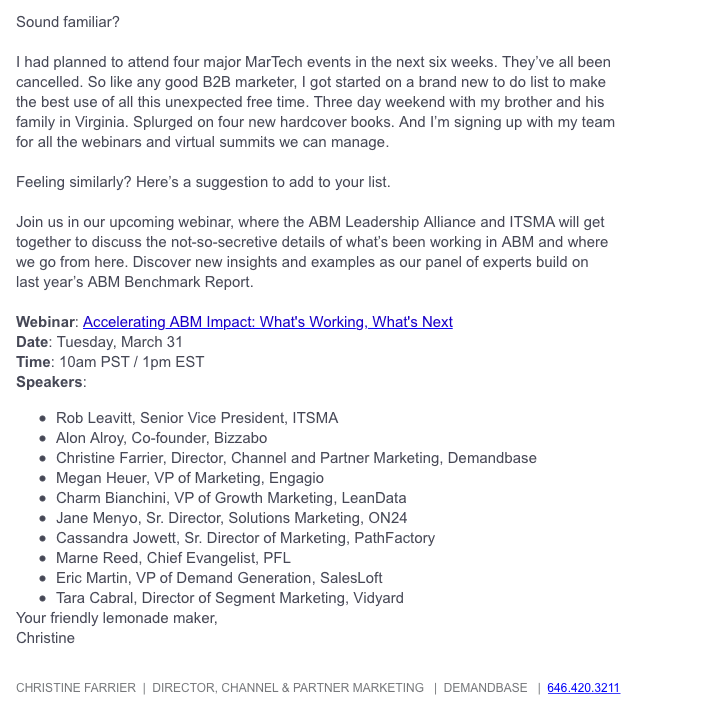Sometimes things just don’t work out as planned and an in-person event needs to be canceled and transitioned into a digital experience. While there are a lot of factors at play during this process, there’s one critical element that you cannot skip out on: communicating with your audience.
If you decide to transition your in-person event into a digital experience, you’ll need to explain the shift to your attendees and set expectations. Communication here can be sensitive and difficult, but we have a few tips — and examples — you can use to keep your audience engaged and prep them for a digital experience.
Let’s take a look:
First, Explain the Situation
If you choose to move your in-person event online, you’ll need to explain why you made this decision. For example, in the wake of the 2019/2020 novel coronavirus, Salesforce’s CEO, Marc Benioff, sent an email to all customers stating the company would postpone all of its in-person events and shift some events to digital experiences.

This is a great example of explaining the situation, setting expectations and announcing a transition to digital experiences.
Just remember: there are essential elements you need to include in your communications. You’ll need to explain what is going on, why it’s happening and where attendees can go to for additional information.
Second, Invite Audience to Join the Digital Experience
Once you explain what is happening and why, send a message inviting attendees to join your virtual event. Keep in mind not everyone may have seen your initial message, so adding in some context around the situation at the beginning of your email can be helpful.
Here’s a good example from Demandbase:

If you’d like keep things short and simple, then tie your digital experience directly to the intention of the in-person event. Here’s a second example from Zendesk:
Third, Keep Your Audience In the Loop
It’s easy for audiences to miss emails and social messages regarding a digital experience. So, having an email and social campaign to remind audiences of the transition is essential.
Here’s another example from Zendesk, reminding its audience of its upcoming digital experience:
You can also use your company’s blog to share updates of the digital event and keep audiences informed of what’s being developed for their benefit. For example, DOMO has two great posts explaining why it moved its annual conference, Domoplaooza, to a digital experience in 2020 and what it’s doing to stoke excitement in its community for the event.
Fourth, Bring Your Event to Life
Finally, it’s time to launch your digital experience. For this, we recommend sending a morning-of email detailing what attendees can expect and how they can access the event. If you’re running a live event, make sure you signal at what time or times the event is taking place.
For example, Salesforce’s World Tour expo used its digital experience landing page to show attendees when its event is officially running, recommend sessions to watch next and highlight events relevant to an attendees role:
During the event, you’ll want to explain how attendees can interact with the digital experience. Saleforce’s World Tour event also provided attendees with simple, clear instructions on how to engage with representatives in a product demo:

And that’s it! When you’re transitioning an in-person event to digital remember to explain the situation, invite your audience to the digital experience, keep your audience in the loop and bring your event to life. Good luck!






